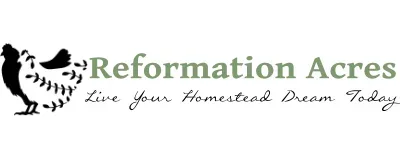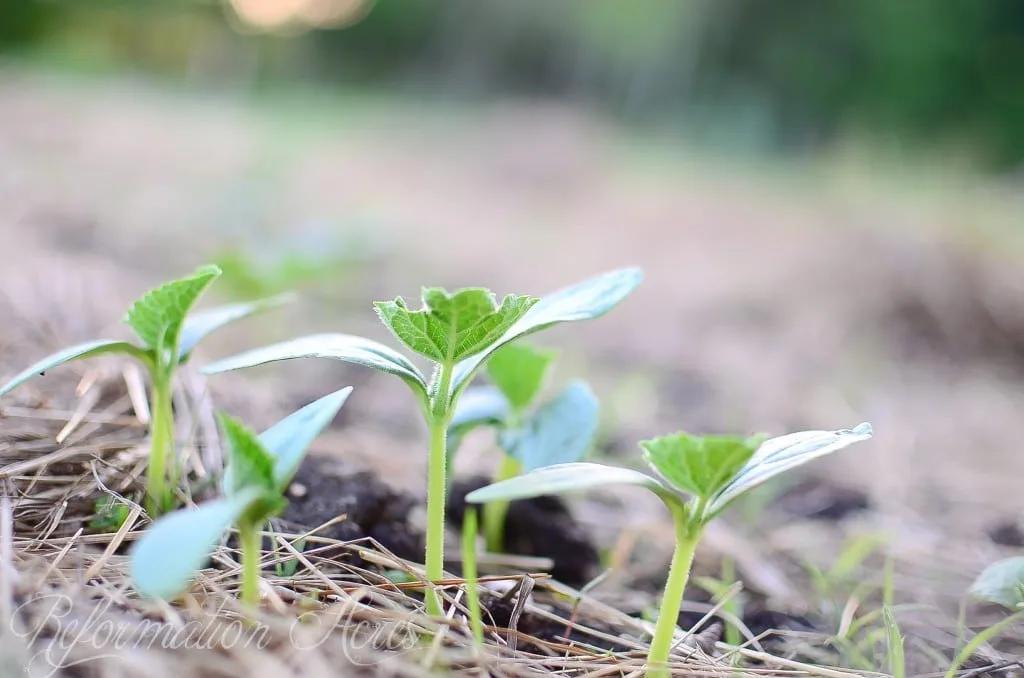When To Plant Garden Seeds Using a Seed Sowing Calculator

It’s always a challenge to know exactly when to plant vegetable and herb seeds in the garden. Whether you start your seeds indoors or outdoors, knowing the right time to plant is a crucial part of learning how to grow vegetables and herbs from seed. Using a customized seed sowing schedule can help you know when to plant through the spring and fall planting season!
Every year you can find me scowling in frustration at the work before me. I’ll be sitting with my list of heirloom seeds I bought for the garden, a couple seed catalogues, a calendar, and a blank chart, trying to figure out when would best time to nestle each little seed under the soil, hoping, rather praying, that they would grow and flourish and feed my family with the freshest and most nutritional food I can place before them.
“They” say you get dumber each time you have a baby. Which, after 8 children, means I’m not as bright as I used to be. I sure feel it when I’m trying to figure out all those dates of when to plant last minute. (Because it would be way too hard to plan ahead, wouldn’t it?)
So I made one for the last time.
I went all out, created a once-and-for-all spreadsheet! I will never have to sit down and have to work out those figures ever again! And neither will you.

Use a Custom Seed Sowing Calculator to Know When to Plant
With my new chart, I simply need to enter my first and last frost dates for my zone. (Or better yet, the observed averages for my garden micro-climate). The chart does all the rest! It automatically fills in all the dates for every vegetable and herb I could ever plan to grow! (And then some!)
(You can find your frost dates here.)
If I notice that planting tomatoes on 3/16 leaves them overgrown and struggling by the time the soil is warm enough to plant them, then I can make a note in my Homesteading Binder, edit the formula to reflect the adjustment, and have healthier seedlings ready for the garden next year! I love that I can customize it just for my garden & observations!

Having a plan and notes will help you to be patient when you’re so eager to get your hands into the earth. A lesson I learned firsthand last year.
While it wasn’t as nearly organized and comprehensive and customizable as this worksheet, I made myself an awkward seed sowing schedule to follow last year.
It was torture to stick to the plan while seeing other’s gardens with little plants growing. Mine weren’t even started yet! But you know when the payoff came? In late August. Many of my plants were dropping heavy yields that continued all the way into November while I drove by overgrown garden after overgrown garden and watched them all be tilled under by the first of September. I still had a solid 8 weeks of harvesting left!
Being patient and following a plan also helps with your pest load. Let’s take cucumbers for example. I plant mine a couple weeks late and am able to avoid bacterial wilt spread by those rascally little cucumber beetles. Waiting ensures that your soil is warm enough for planting. The ground will be a bit drier after the spring rains.
I tried to include every vegetable and nearly every herb I could think of in the Seed Sowing Schedule Calculator and ended up with 39 vegetables & 22 herbs, everything from artichokes to thyme!
I love the clean design, that it’s straightforward & easy to understand- not all boggled & jumbled with a million different columns and boxes and colors. If the seed shouldn’t be started indoors (or outdoors), that is indicated by having that option blocked out.
I printed out my new, custom calendar and placed it in the back of my Seed Packet Organization Box so it’s right where I need it when I need it. I also added a copy to my Homesteading Binder so that I could make notes in my Month-At-A-Glance page.

Where to Get the Custom Seed Sowing Calculator
The Custom Seed Sowing Calendar is available as part of my Homestead Management Binder Sheets that you can download.
The Seed Sowing Schedule is an amazing gardening tool all on its own. But you’ll also be able to join the ranks of hundreds of other organized homesteaders and gardeners this year who learned the benefits of keeping good records. The Homestead Management Printables will definitely improve your productivity this year, and make it your best garden ever!
Another great tool and resource for gardening is called Seed Time. It uses your zone to help you know when each vegetable should be started, helps with garden planning, secession planting, crop rotation from year to year, seed inventory and more. If you have a winter garden, there is a feature that helps with that too. It does everything my seed sowing schedule template will do and more. You can still use the my template, but if the other features also sound useful to you, you may want to check it out.
Having one less thing to do in preparation for spring next year makes me very happy! So does having a custom, calculating chart that is easy to use and simple to understand at a quick glance!
So tell me. When do you get to start planting your seeds?













How do you grow kale?
thanks.
Kale is pretty simple to grow! You can pretty much plant seeds in the spring as soon as the ground is workable all the way to mid-summer so it has a chance to get established before winter. I sow way too many seeds on purpose and then when the plants are about 6″ tall I thin them heavily over a couple weeks and enjoy baby kale. I’ve seen where folks get real methodical about harvesting and end up with this tall stalk and a few leaves on top, but when I want to harvest, I just take a leaf or two from each plant. They’ll grow new ones. With some fabric protection, you can even keep it going over the winter! In our last garden, I know a few kale plants were over 2 years old. Kale is a light feeder so you shouldn’t need to fertilize it to keep it growing and producing. Hope that helps!